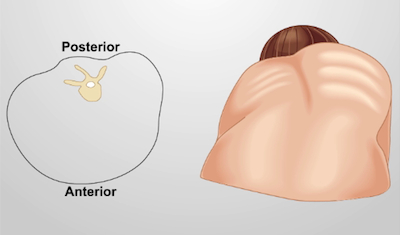呼吸道考试 i: 检查和触诊
Overview
资料来源: Suneel Dhand,MD,参加医师,内科,贝斯以色列女执事医疗中心
与主诉呼吸急促的呼吸道系统疾病是门诊和住院病人评价的最常见原因之一。呼吸问题的最明显可见线索将病人是否显示呼吸窘迫,如快速呼吸速率和/或发绀的任何迹象。在临床情况下,这总是需要紧急关注和氧气治疗。
不同于其他体系统中的病理,许多肺部疾病,包括慢性阻塞性肺疾病 (COPD)、 哮喘和肺炎,可通过仔细的临床检查单独诊断。这将启动全面检查和触诊。请记住,在非紧急情况下病人的完整的历史记录将一直已经采取,获得重要洞察曝光历史 (例如,抽烟),这可能会引起特定的肺部疾病。这段历史就可以确定物理结果进行检查。
Procedure
1.考试的准备工作
- 之前检查病人,用肥皂和水彻底洗手或用抗菌洗清洁它们。
- 向病人解释,你将要执行验肺。
2.定位病人
- 请确保病人脱至腰间 (女性保持穿的内裤和一次暴露每胸廓之一)。
- 调整病人位置检查桌上 30-45 度角,并从右侧接近病人。审查的外的侧肺要求将病人身体前倾或坐在床边。
3.一般观察
- 第一次有一般看看病人。此时,病人的生命体征应该已经得到了。特别注意病人的呼吸率和氧饱和度。
- 注意到明显呼吸窘迫的迹象。这些措施包括:
- 快速呼吸速率 (正常的呼吸速率是周围 14 20 每分钟呼吸次数)
- 青紫 (蓝色或紫色着色的皮肤或粘膜)
- 不寻常的姿态,以最大限度地进入空气 (病人可能会向前倾上伸出来的膀臂 [三脚架位置],)
- 使用辅助呼吸肌呼吸 (不等边,胸锁乳突和斜方肌肌) 除了横膈膜<
Application and Summary
跳至...
此集合中的视频:

Now Playing
呼吸道考试 i: 检查和触诊
Physical Examinations I
157.3K Views

物理考试的一般方法
Physical Examinations I
117.5K Views

观察和检查
Physical Examinations I
95.0K Views

触诊
Physical Examinations I
84.5K Views

打击乐
Physical Examinations I
101.7K Views

听诊
Physical Examinations I
62.2K Views

病人的服装物理考试期间的适当调整
Physical Examinations I
83.4K Views

血压测量
Physical Examinations I
108.7K Views

测量生命体征
Physical Examinations I
114.9K Views

呼吸道考试 II: 打击乐和听诊
Physical Examinations I
212.9K Views

心脏考试 i: 检查和触诊
Physical Examinations I
176.6K Views

心脏考试 II: 听诊
Physical Examinations I
140.1K Views

心脏的考试 III: 异常心音
Physical Examinations I
91.9K Views

外围的血管考试
Physical Examinations I
68.8K Views

用连续波多普勒的外围血管考试
Physical Examinations I
38.6K Views
版权所属 © 2025 MyJoVE 公司版权所有,本公司不涉及任何医疗业务和医疗服务。




